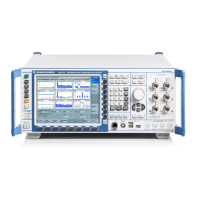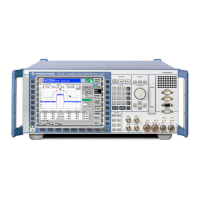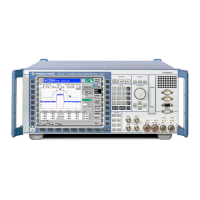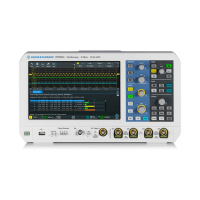Command Reference - Base Software
R&S
®
CMW500
204User Manual 1173.9463.02 ─ 06
6.3.3 High Resolution Timer
After execution of a command it may be required to wait a well defined time before pro-
ceeding with command script processing, e.g. because the DUT needs some time to
stabilize after a modification. This can be achieved using the following commands.
SYSTem:TIME:HRTimer:ABSolute..................................................................................204
SYSTem:TIME:HRTimer:ABSolute:SET...........................................................................204
SYSTem:TIME:HRTimer:RELative...................................................................................205
SYSTem:TIME:HRTimer:ABSolute <Timeout>
This command starts a timer. The timeout is specified relative to an already set time-
stamp, see SYSTem:TIME:HRTimer:ABSolute:SET.
When the timer expires, "Operation Complete" is indicated. This event can be evaluated
by polling, via a *OPC? or via *WAI.
Setting parameters:
<Timeout> Range: 0 ms to 4294967295 ms
Default unit: ms
Example:
SYST:TIME:HRT:ABS:SET
SYST:TIME:HRT:ABS 1000
*OPC?
The three commands have the following effects:
Set a timestamp with the current system time.
Start a timer with a timeout value of 1 second relative to the time-
stamp.
Wait until the timer expires before processing the next command.
Usage: Event
Asynchronous command
Firmware/Software: V2.1.10
SYSTem:TIME:HRTimer:ABSolute:SET
This command sets a timestamp with the current system time. A timer can be started with
a timeout relative to this timestamp, see SYSTem:TIME:HRTimer:ABSolute
on page 204.
An existing timestamp is overwritten.
Return values:
<Timestamp> A query returns seven values, separated by commas:
year, month, day, hour, minutes, seconds, milliseconds
Example:
SYSTem:TIME:HRTimer:ABSolute:SET
Set a timestamp with the current system time.
SYSTem:TIME:HRTimer:ABSolute:SET?
Query the timestamp. Possible result:
2011,3,20,12,5,30,999
Instrument-Control Commands
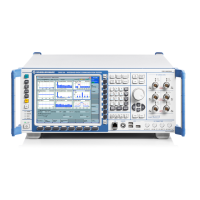
